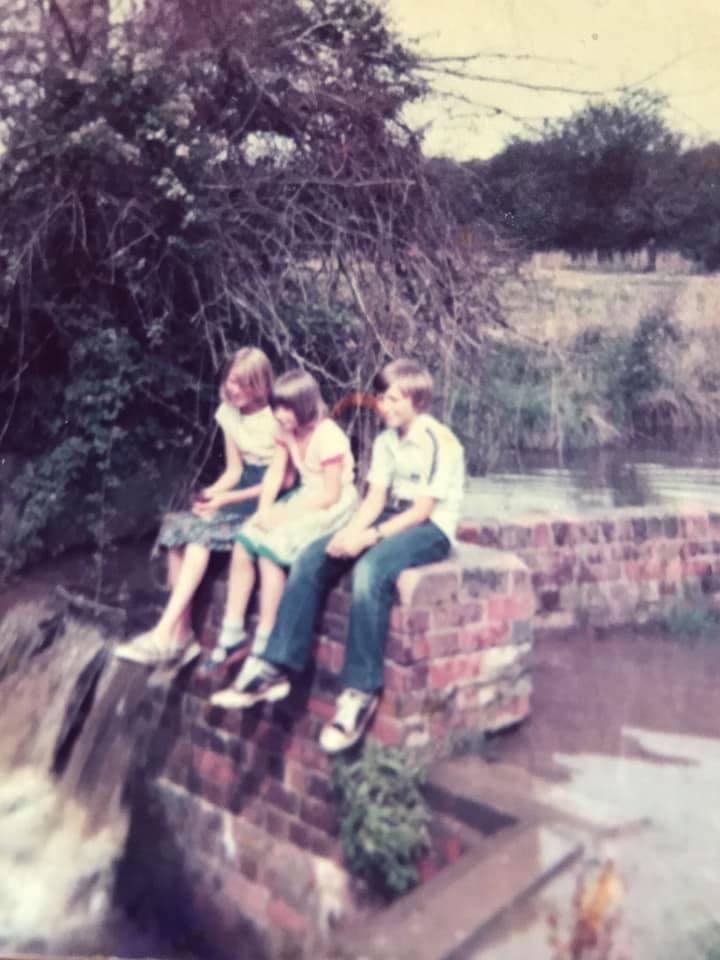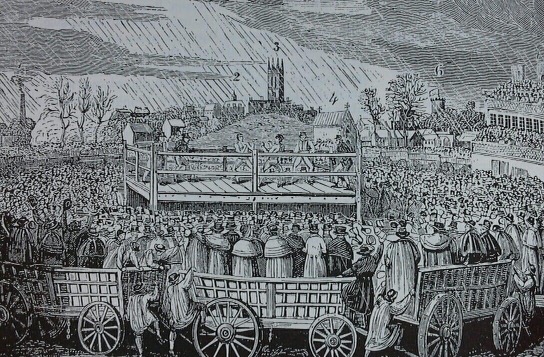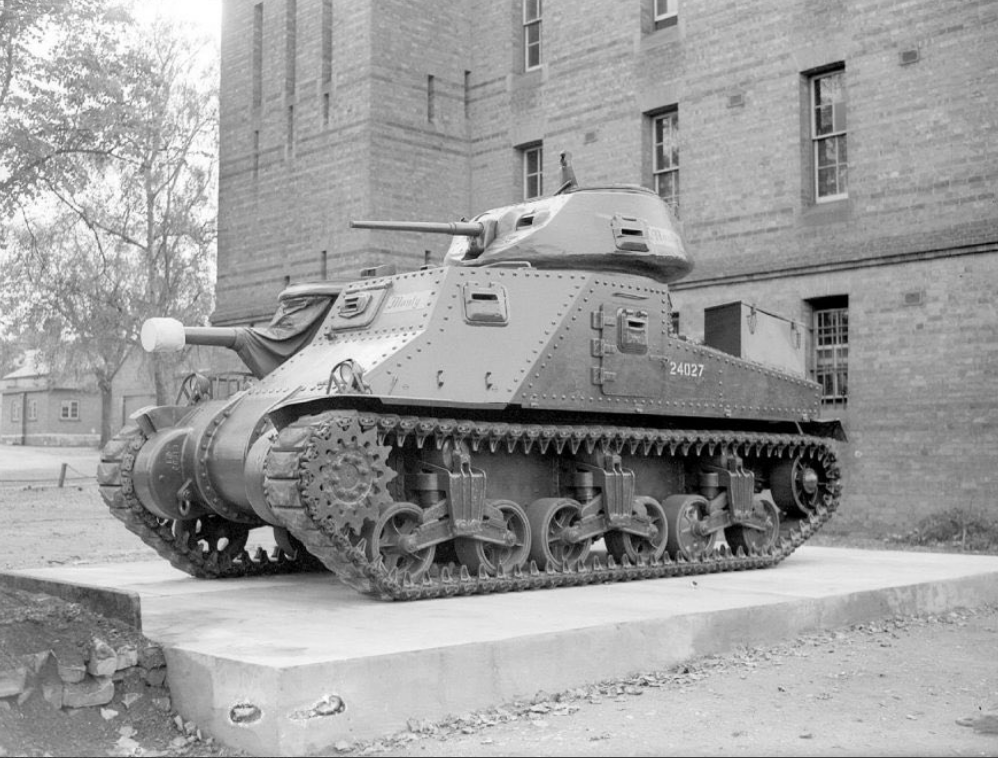We’re keen to hear from you if you have any information about the history of the area.

Racecourse Common Entrance
The image provided by a member of FoSML shows the entrance to the race course common at the lower end of Friars Street. The clothes of the people in the image indicate that the date is circa 1935.

St Marys Lands were used to support the war effort. See the attached proposal that was made by FoSML members to classify the lands with Fields in Trust organisation in 2018 as a part of the centenary celebrations.
Tractor
An old postcard dating from WW1. It shows the Warwick Corporation steam roller in front of the herd’s man’s house. The house was apparently for the herd’s man who supervised the cattle on the common. The steam roller was bought from Aveling & Porter of Rochester Kent in 1892. It’s an Invicta ten-ton roller. The driver is Mr Ernest Anker who worked for the Corporation for around 60 years, driving the steam roller for 20 of them. The other man is unknown but was possibly the steam roller’s flag carrier. The notice on the house refers to the rights of members of the Warwickshire Golf Club to play on the links. The golf links was established on the common in 1886. Part of Crompton Street can be seen behind Mr Anker. (All details of this photo were taken from Rosemary Booth’s book of old postcards of Warwick. Thanks).

Happy Memories of Gog Brook – The Diver
Member Doreen Mathews recalls of the times years ago she spent the Common.

This photo would been taken over 40 years ago with my niece Helen Courtney and my children, Stephen and Alison. We were visiting Warwick and I said I would love to see “The Diver”, Gog Brook where I , with so many Warwick children spent many happy hours. Going back to my childhood, Mum would be working in our bakery shop so we would set out with Mrs Osbourne and a gang of us children with a picnic. Probably paste sandwiches and buns from our bakery. It would be late August time so we picked blackberries and nibbled red haw berries and we would splash about in the Diver. I can still feel the joy now! It was great when I was able to revisit with my own children. When coming back from Stratford, St Marys Church stood out on the horizon and would sink lower until it disappeared. I can still remember but not when, we once went up St Marys Tower. I can remember the steps going round and round. I hope that I may bring the thoughts of happy childhood times in Warwick and St Marys Lands.
Fighting on the Common

An image of a boxing match held on Warwick Common. The year is unknown, but St Marys Church can be seen in the background (2). Caesar’s tower in Warwick Castle can be seen identified by a “6” on the right side. It looked a popular event.
Member Les Kent recalls walking on the Common.
When a youngster with others, we used to love to walk the public right of way across the second bridge over Gog Brook, from out Common. Clearly marked with iron uprights and rails each side. (Now split with the Warwick by -pass of course). It took one past the troop and family quarters, dating back to circa 1858 and ended up at the side of the barracks Main entrance with a guard box just inside. We used to go to see Monty’s tank. Though the tank was within the barracks complex- in point of fact to the side of the entrance, there was a permanently located open topped army field car. Many were obviously happy enough to see that. The assumption being that Monty had also used the field car. The local populace had taken pride in the fact that in his early regimental days he served in the Royal Warwickshire Regiment. On something of a tangent two things linger in my mind. When a small boy, my Dad (who had actually served in two tank regiments) took me up to Northgate Street in Warwick. The Field Marshall had attended a church service at St Marys. When he came out he made a point of saying “Good Afternoon” to the people who lined the street. Then, when serving my apprenticeship, I worked at Colonel Kendall’s house in Mill Street. Now the Colonel had served in the Royal Warwickshire Regiment. I was working with Ken Meddoms, an excellent Painter and Decorator. We were preparing a room Monty’s stay there in the early sixties. I am pretty sure Col Kendall is seen in the picture with F.M Montgomery’s actual tank. The Royal Warwickshire Regiment did various tours of duty emanating from Budbrook Barracks. Including six years in India between WW1 and WW2. I know this because my Dad’s brother, Wilf, a corporal with the Regiment was out there. Ironically enough so was Colonel Kendall. In later years Wilf too worked on his house. When a very young soldier, based at the Barracks, Wilf Kent found his self in a situation where a fire had broken out. There was a problem with the lines of communication with the Fire Station in the Butts at Warwick. He was very much into physical fitness, so he sprinted down across our Common and onto the Butts to sound the alarm. Then he sprinted back before the fire crew and appliance. Whether the fire had been brought under control at that time I never heard. At one time I believe the fields between the Barracks and Gog Brook were used for military exercises. Because certain items remained in the early fifties like a mortar shell. We grew up seeing the soldiers taking a short cut across our Common, between the hills and into the town. And hearing rifle practice on the ranges the other side of the road from the main barracks. Two last points, there is serious investigatory efforts to see if a foot bridge over the by-pass. To make a safe link of the public right of way on both sides. I hope that happens because there is also a people’s historic dimension to it. Secondly is there really a memorial that does justice to the important historic connection of the Royal Warwickshire Regiment, Budbrooke Barracks and all that served there and under its banner. I feel the site should have more than what I have seen. Thinking about its glorious past and those who fell whilst serving! A little extra has come to mind. When I first remember seeing the band of the Royal Warwickshire Regiment, at it’s head was the antelope mascot. (Something you don’t forget at a tender age). Ironically enough it was close to passing the Antelope pub. For many years the regimental pub of the Royal Warwickshire Regiment at the bottom of the Saltisford. In retrospect one concludes that the band had paraded in the town and were on their way back to the Barracks. I mention this because in later years I went in the pub and with its connection with the regiment there were several pictures appertaining to that. One was in the Corporals mess in Rawalpindi, still in India then but Pakistan now. In that picture was Corporal Wilf Kent, my uncle. Years later, when on a council matter, the regimental pub had become the one at Hampton Magna, I had cause to go there. The pictures from the Antelope pub were on display. All but one that is – the one in the Corporals mess. I have never been back to see if it was found!
It would be remiss of me not to mention one thing of profound sad importance. The Wormhoudt massacre of Royal Warwickshire soldiers and others numbering at least 90 by the Waffin SS soldiers. In May 1940 our soldiers surrendered when their ammunition ran out. In contravention to the Geneva Convention, they were murdered. Some of the Royal Warwickshire troops actually lived in the county so the likelihood is that they would have seen service at Budbrooke Barracks! Was the wicked Waffin SS murderers ever put to trial? I don’t know!
